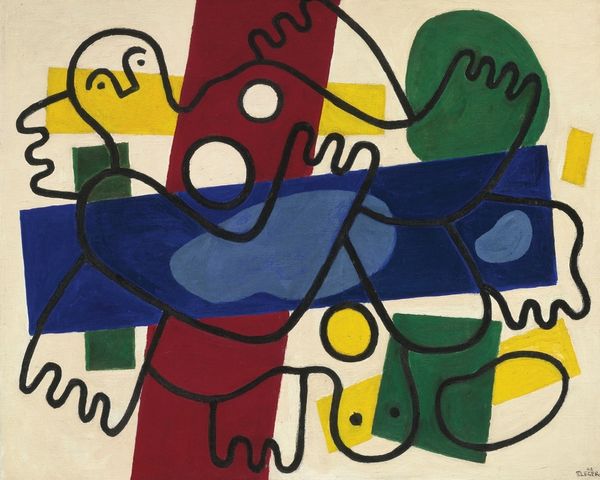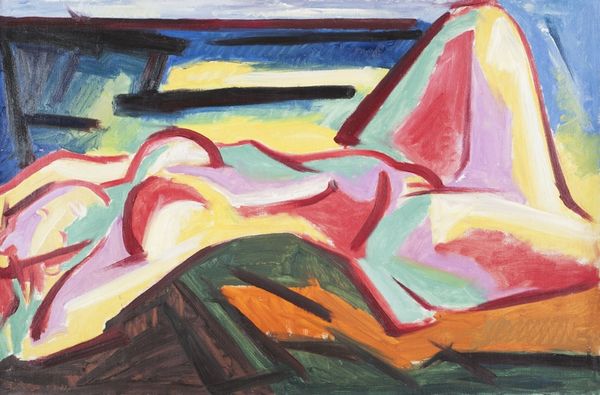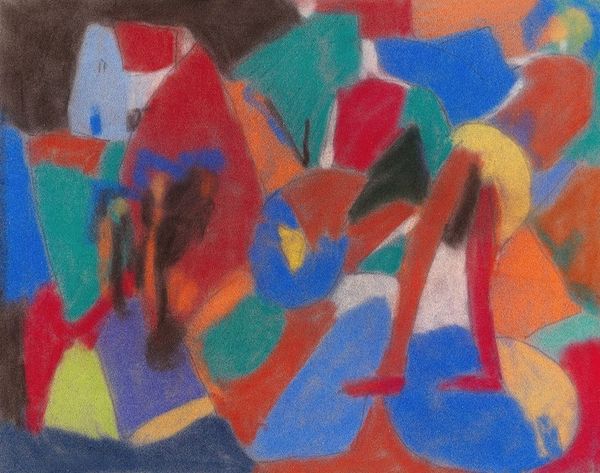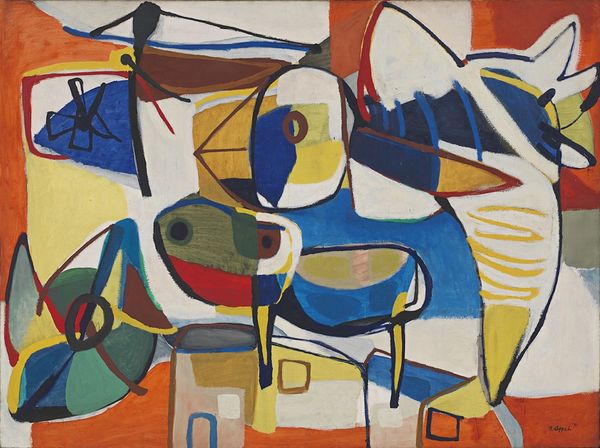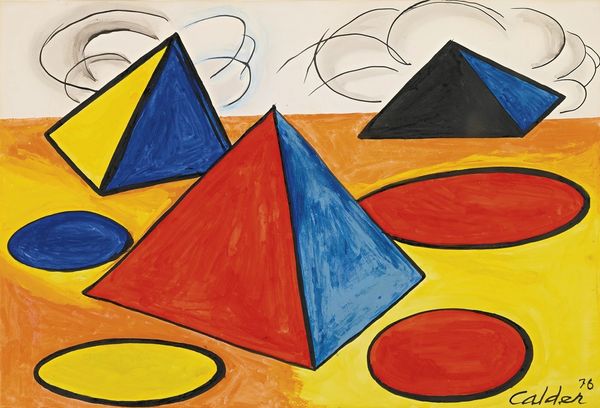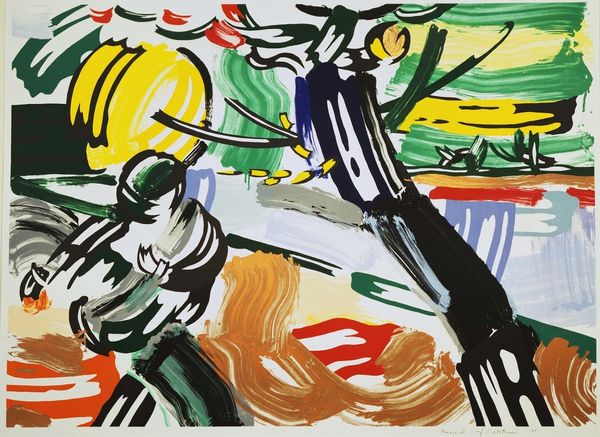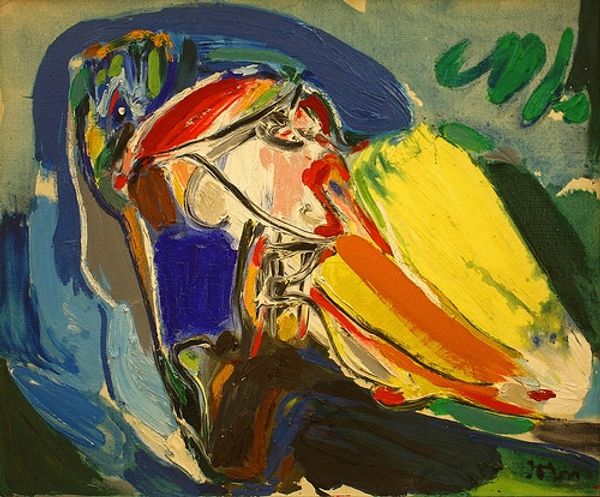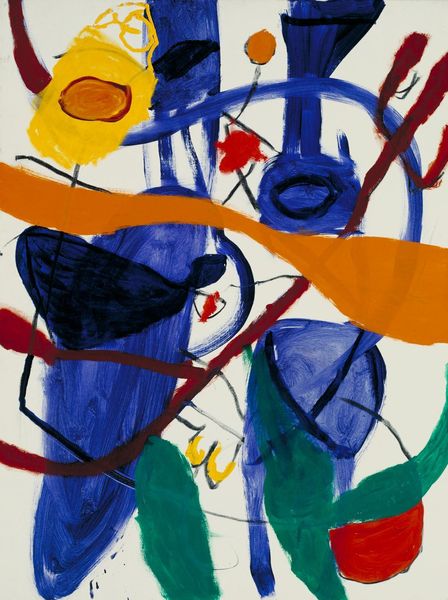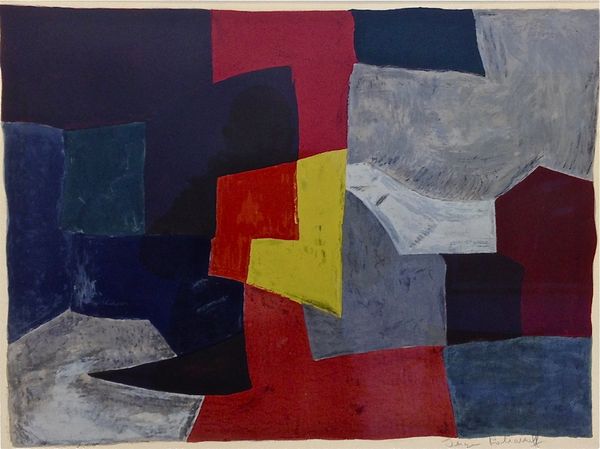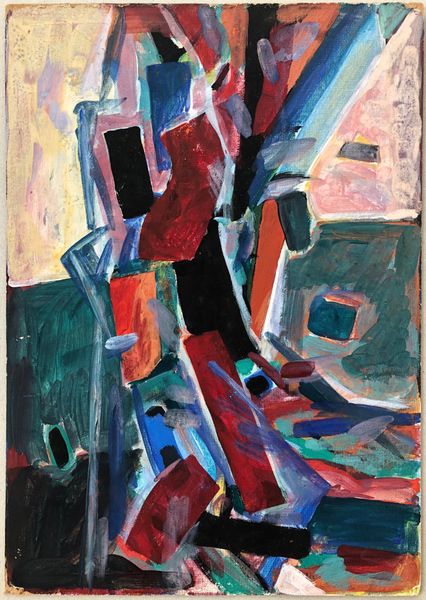
Dimensions: 60 x 80 cm
Copyright: Volodymyr Loboda,Fair Use
Curator: Right, let's immerse ourselves in Volodymyr Loboda's "Sorrow, Leaning Woman" from 2005, rendered with acrylic paint. Quite a stark contrast to the other pieces here, wouldn’t you say? Editor: Yes, quite. It hits you right away, doesn’t it? This overwhelming feeling of... fragmentation. Like looking at a soul shattered into primary colors, with thick, black lines desperately trying to hold the pieces together. A web, almost like one by Guston... Curator: It's fascinating how Loboda employs such bold strokes. Notice how these harsh, almost violent, lines of black paint seem to define the form of the woman while simultaneously obscuring it, and look at the way it cuts into areas that can represent shapes like female breasts... I find it very striking. Editor: That visual conflict is really interesting. The green feels like the weight of sorrow bearing down, and the red—such a primal, almost angry red. Is that the sorrow of suppressed rage or anger transformed into a creative force? It does tap into primal archetypes... the suffering female, maybe, echoing millennia of lament? Curator: Could be! And then there’s the leaning… that gesture, universally understood as burdened, defeated… The colour blocks definitely evoke landscapes; is this emotional desolation mirroring a barren terrain? Editor: Absolutely, it becomes a landscape of inner turmoil. It almost echoes ancient goddess figures, fallen from grace and transformed into jagged symbols on some forgotten altar. Even the blue at the top… isn't really serene. There is a stark coolness. The coldness is the worst part of it. A sad echo of potential serenity, never fulfilled. Curator: Maybe what grips me most is its deliberate unfinished quality. Like a wound left open, inviting a deeper look. Or even allowing sorrow its process... what about that, that process is exactly to not fully closure with our emotions? Editor: Exactly, perhaps Loboda deliberately allows space for interpretation, refusing a pat resolution for something as vast and timeless as sorrow. It stays present because, indeed, we let that process develop without stopping it. A raw emotive scream.
Comments
No comments
Be the first to comment and join the conversation on the ultimate creative platform.

